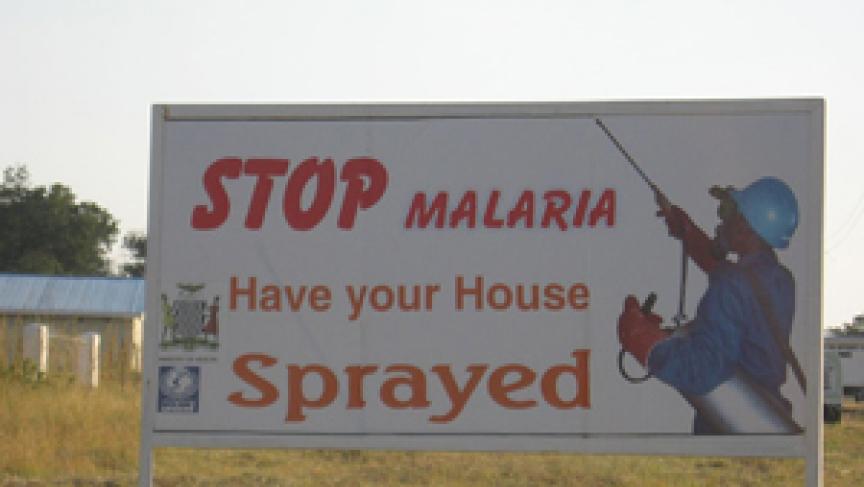17
Dec
South Asian Immigrants Exposed to DDT at Higher Risk of Diabetes
 (Beyond Pesticides, December 17, 2019) South Asian immigrants to the U.S. may be at increased risk of diabetes due to prior exposure to high levels of DDT, research published by the University of California Davis earlier this month indicates. The study highlights a blind spot for health care in the U.S., researchers say. “Our findings evoke a new interpretation of Rachel Carson’s famous book Silent Spring, in that the high DDT exposures of South Asian immigrants in the U.S. currently fall on deaf ears in the U.S.,” said lead author Michele La Merrill, PhD an associate professor in the UC Davis Department of Environmental Toxicology. “Although DDT remains in use in other nations and migration globalizes these exposures, people in the U.S. often mistakenly regard DDT exposure as no longer relevant to our society due to its ban in this country nearly 50 years ago.”
(Beyond Pesticides, December 17, 2019) South Asian immigrants to the U.S. may be at increased risk of diabetes due to prior exposure to high levels of DDT, research published by the University of California Davis earlier this month indicates. The study highlights a blind spot for health care in the U.S., researchers say. “Our findings evoke a new interpretation of Rachel Carson’s famous book Silent Spring, in that the high DDT exposures of South Asian immigrants in the U.S. currently fall on deaf ears in the U.S.,” said lead author Michele La Merrill, PhD an associate professor in the UC Davis Department of Environmental Toxicology. “Although DDT remains in use in other nations and migration globalizes these exposures, people in the U.S. often mistakenly regard DDT exposure as no longer relevant to our society due to its ban in this country nearly 50 years ago.”
When compared to other race and ethnic groups, South Asian immigrants (individuals from India, Pakistan, Bangladesh, Nepal, Sri Lanka, and Bhutan), are at greater risk of developing diabetes, even when adjusting for potential confounders such as age and obesity. Authors of the study hypothesized that this was a result of past exposure to high levels of persistent organic pollutants (POPs), as past studies have found strong connections between POP exposures and the disease.
Researchers tested their inference by enrolling 147 participants living in the San Francisco Bay Area, aged 45 to 84. Each individual underwent a battery of tests, including blood sugar and diabetes status, body weight, and blood plasma levels of various POPs.
Levels of POPs in study participants were considerably higher than amounts detected in the average American population, even though most immigrants tested had been in the U.S. for an average of 26 years. Higher blood plasma levels of DDT correspond with an increased likelihood an individual is obese, has prediabetes or diabetes, and has fatty liver, even when adjusting for age, sex, years in the U.S., education level, and amount of fish protein consumed on average. Importantly, researchers found DDT is associated with higher levels of liver fat and circulating insulin independent of whether an individual is obese, indicating a strong link between the chemical and disease.
Despite the U.S. ban of DDT, its use has continued around the globe, and in particular on the Indian subcontinent where it is still used as a mosquito adulticide. Given the strong propensity for the chemical to bind to fat, it is not surprising that individuals are dealing with the effects of exposure that occurred decades ago.
DDT and other chlorinated POPs have been linked to diabetes in the past. A 2013 study found individuals with higher concentrations of DDT are four times more likely to develop type two diabetes than those with lower rates. A 2010 study found that even low-dose exposure to certain POPs may play a role in the increased incidences of diabetes. And a separate study released in 2011 found that elderly individuals who had been exposed to organochlorine pesticides are up to three times as likely to develop type 2 diabetes.
DDT has long been connected to a wide array of human health problems beyond diabetes. A long line of recent studies associated with the negative health effects of DDT include non-Hodgkin lymphoma, as well as breast cancer, autism, reproductive problems, and Vitamin D deficiency. Research from Washington State University in 2013 found that DDT can result in multi-generational impacts that increase the chance that the great grandchildren of exposed individuals will become obese.
Hundreds of billions of dollars of health care costs are spent each year treating diabetes in the US. It is critical that we invest in understanding the etiology of the disease, as well as focus on ways to prevent future cases. With far too many diseases in the US associated with pesticide exposure, reducing the use of these toxins in the management of pests is a critically important aspect of safeguarding public health and addressing cost burdens for local communities, particular those that are minority and underserved. Learn more about the dangers both past and present pesticide use pose through Beyond Pesticides’ Pesticide Induced Diseases Database.
All unattributed positions and opinions in this piece are those of Beyond Pesticides.
Source: UC Davis, Environmental Science and Technology











No more POISON!!!
December 17th, 2019 at 2:10 pm